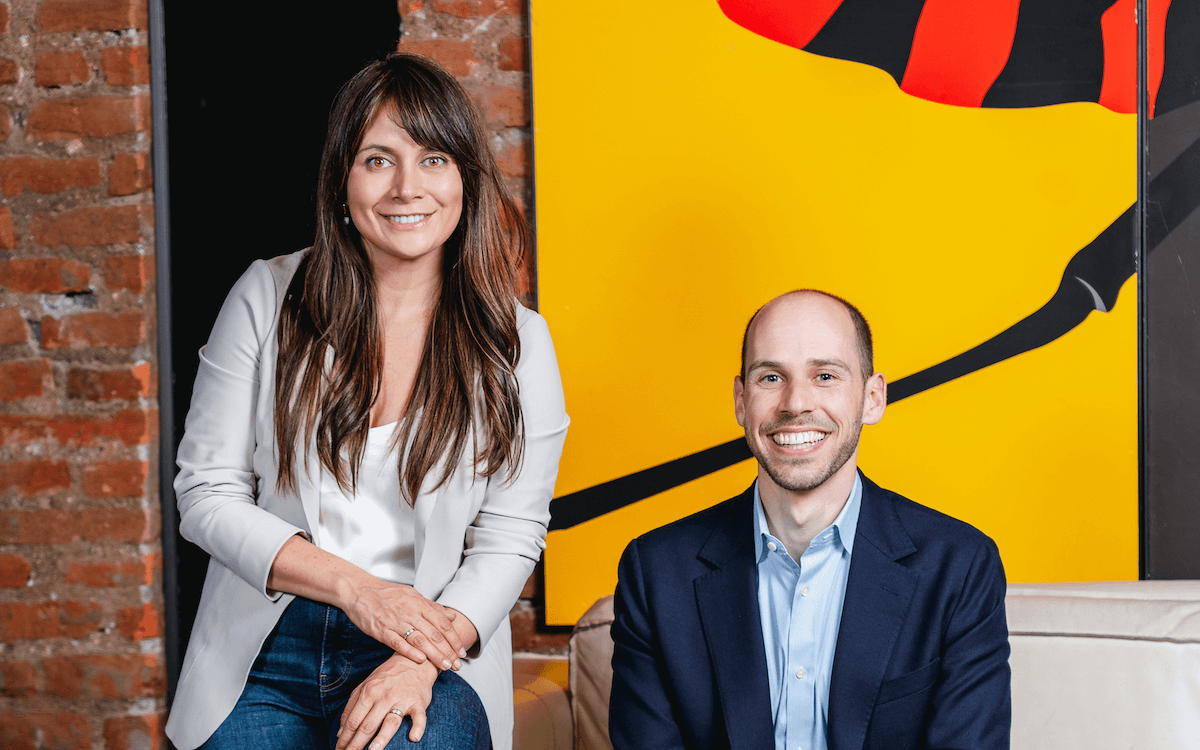ImpactAlpha, Dece. 18 – Not enough money for promising ventures. Too much money flowing to a few companies. Both statements are true for impact-oriented small and growing businesses in emerging markets.
The big opportunity in “frontier finance” for small and growing businesses: solving large problems for large populations. Intrepid entrepreneurs are working on the frontlines of climate change, helping farmers deal with increasingly unpredictable weather patterns that threaten their livelihoods and the global food supply; reshaping systems that improve urban living for rising megacities in Africa, Asia and Latin America; and introducing basic services like electricity, digital connectivity, and financial products for the world’s emerging middle class, whose collective spending power will nearly double to $64 trillion by 2030.
A select few entrepreneurs are riding a private-equity and venture-capital gold rush. Many of the big new investors report the need for “an Africa play.” Billion-dollar funds face pressure to get capital deployed. SoftBank’s Vision Fund broke the barriers, but other investors also have been willing to throw big money at a few would-be unicorns in markets where the pipeline of companies able to take such big checks is slim.
At the same time, yawning capital gaps remain for early-stage companies, women and other underrepresented founders, and second- and third-tier cities and towns. If or when megadeals fall out of favor and the private-equity giants pull out, it will again fall to emerging market impact investing veterans to make the numbers work with six- and seven-figure deals and flexible investment structures. They’ll keep working to scale up impact as they scale up revenues. And they’ll be working to build a genuine capital market for proven, locally relevant solutions from a broad base of impactful companies.
– Jessica Pothering
1. Sticking to the basics.
Expect global fintech and e-commerce to expand access to services. A raft of entrepreneurs are delivering cheaper, better services for the emerging middle class in emerging markets. Creative business models are unlocking new economic value and productivity. Crowdlending platform Kiva is building a blockchain-based national digital identity infrastructure in Sierra Leone to improve access to financial and social services. Taz Technologies and Copia are setting up parcel delivery services in parts of Africa other carriers can’t reach. Companies like Frogtek (Mexico), OkCredit (India) and Nomanini (Africa) are helping informal and neighborhood shops revamp their businesses for the digital age.
- Beating expectations. Many impact fund managers in emerging markets are reporting solid returns. Still, opportunities for substantial impact remain unrealized. For global investors, investing in basic services are a safe bet amid market volatility and uncertainty.
- ImpactAlpha is watching for: More deals that serve the informal economy, improve access to education, and upskill the workforce for higher-paying jobs.
2. Generating ‘gender alpha’ with female fund managers.
Expect gender balanced teams to outperform. Female fund managers can help more capital flow to women across the economic value chain, including female entrepreneurs, suppliers and customers. Female founders receive only 7% of emerging market private equity and venture capital, but the situation is changing. A rough survey of ImpactAlpha’s dealflow coverage found almost 30% of companies had at least one female founder, CEO or managing director. The end of 2019 saw an uptick in activity for investment funds keying in on gender and diversity in their portfolios. In Africa, female-led Aruwa Capital and Alitheia launched and raised funds. Nearly a third of the funds in Capria Ventures’ portfolio are women-led. The new U.S. Development Finance Corp. is expanding its capacity to back female fund managers.
- Limited Partner insight. Under-capitalizing female fund managers limits access to women entrepreneurs, women-focused businesses, and insights about women’s markets. Gender-balanced teams perform better than homogenous ones, according to International Finance Corp.
- Women supporting women. The second Women’s Livelihood Bond developed by Durreen Shahnaz and Impact Investment Exchange aims to help women in Asia access affordable credit, agricultural inputs and clean energy. Female-led Laboratoria in Peru is training low-income women in tech skills, tripling their earning power. Marcia Ashong’s TheBoardroom is working to double the number of women on African company boards. RENEW in Ethiopia launched a micro-fund for female founders like Valerie Rogers Muigai who started a sustainable diaper company in Uganda.
- ImpactAlpha is watching for: The normalization of gender-lens perspectives across the investment landscape.
3. Incubating innovative finance.
Expect to see emerging markets become the seedbeds of global financial innovation. To boost the flow of capital into nascent sectors, unproven models, and markets deemed too “risky”, innovative financiers in emerging markets are testing new investment structures. Root Capital is incentivizing Latin America’s agribusinesses with outcome-based “bonus” payments. Rockefeller Foundation has incubated 50 promising models across more than two dozen countries in its Zero Gap grant portfolio (and has established an impact fund to finance their growth). India, South Africa and Jamaica are developing social impact exchanges to allow investors to buy shares of social enterprises.
- Conservation finance. As emerging markets are home to much of the world’s biodiversity, rainforests and coastal areas, investors are designing impact finance around conservation. Ejido Verde’s community ownership model boosts native communities’ livelihoods and protects Mexico’s forestlands. Nature Conservancy is bringing reef insurance from Mexico to Florida and Hawaii. Packard Foundation seeded a Southeast Asia tropical forestry fund with a $10 million “impact tranche.”
- ImpactAlpha is watching for: Financial innovations incubated in the global south to be replicated in the north to meet the challenges of climate change and inequality.
4. Resetting development finance.
Expect pressure on development finance institutions to play a more catalytic role in meeting the U.N. Sustainable Development Goals. The development finance institutions, or DFIs, still provide the bulk of capital for impact funds in emerging markets. India’s Aavishkaar raised equity funding from the Netherlands’ FMO to fuel its growth in Asia and Africa; LeapFrog Investments won a major commitment from OPIC. FinDev Canada was a key investor in Costa Rica-based EcoEnterprises’ third fund. To coax more commercial capital into emerging market impact funds, however, advocates say development finance institutions need to take greater risks.
- Walking the talk. CDC Group launched its Catalyst Strategies initiative to respond to persistent market failures, support nascent markets and prove out new solutions. OPIC reset as the U.S. Development Finance Corp. with a bigger mandate and equity investment capacity. Canada jumped into the development finance last year with FinDev Canada.
- ImpactAlpha is watching for: DFIs to accept higher risk or lower returns in order to attract more commercial capital to impact funds in emerging markets.
5. Raising the next fund.
Expect emerging-market impact fund managers to raise their second, third and fourth funds. The first wave of Latin American impact fund managers, with stocked pipelines and committed investors, are now raising second funds. LeapFrog raised $700 million for its third fund to back healthcare and financial services firms serving people earning less than $10 per day. Elevar Equity has raised four funds by searching out companies able to scale affordability-centered product and service businesses. “We want the DNA of the company to be focused on the end customer in the low-income community,” explains Elevar’s Sandeep Farias.
- Local investors. Regional funds are raising local capital. Adobe Capital’s second fund was backed by a cohort of Mexican investors. Nigerian gender-focused impact fund Aruwa Capital is targeting West African backers for its inaugural fund.
- ImpactAlpha is watching for: Co-investment agreements that give private equity giants access to dealflow in emerging markets.
6. Watching out for mission drift as deals get bigger.
Expect bigger deals – and a backlash. Not long ago, nine-figure equity investments in emerging market startups were practically unheard of. This year, medical drone delivery company Zipline scored a whopping $190 million from TPG Growth’s Rise Fund, Temasek, Goldman Sachs and others. Andela, an African tech training and job placement venture, took in $100 million. Inclusive fintech was the big winner as private equity firms clamored to deploy billion dollar funds, including to Argentinian neo-bank Ualá, micro-lender Tala, and mobile credit company Branch. Off-grid solar companies in Africa raised hundreds of millions of dollars in 2019. The risk: Mission drift, as growth-stage investors press for, well, growth strategies that may cut against social impact objectives. If impact investing by large outside asset managers turns out to be just the latest form of emerging market growth capital, “it could lead to major expectation mis-matches going forward,” says Lok Capital’s Vishal Mehta.
- Mitigating mission drift. Andela cut back entry-level training and employment, while Kenyan agricultural logistics company Twiga shifted its supply chain away from smallholder farmers. A well-planned “roadmap” can help impact investors, particularly early-stage emerging market investors, manage mission drift in their portfolios.
- ImpactAlpha is watching for: Collateral damage if perceptions of an impact “bubble” trigger a shake-out or market correction.












